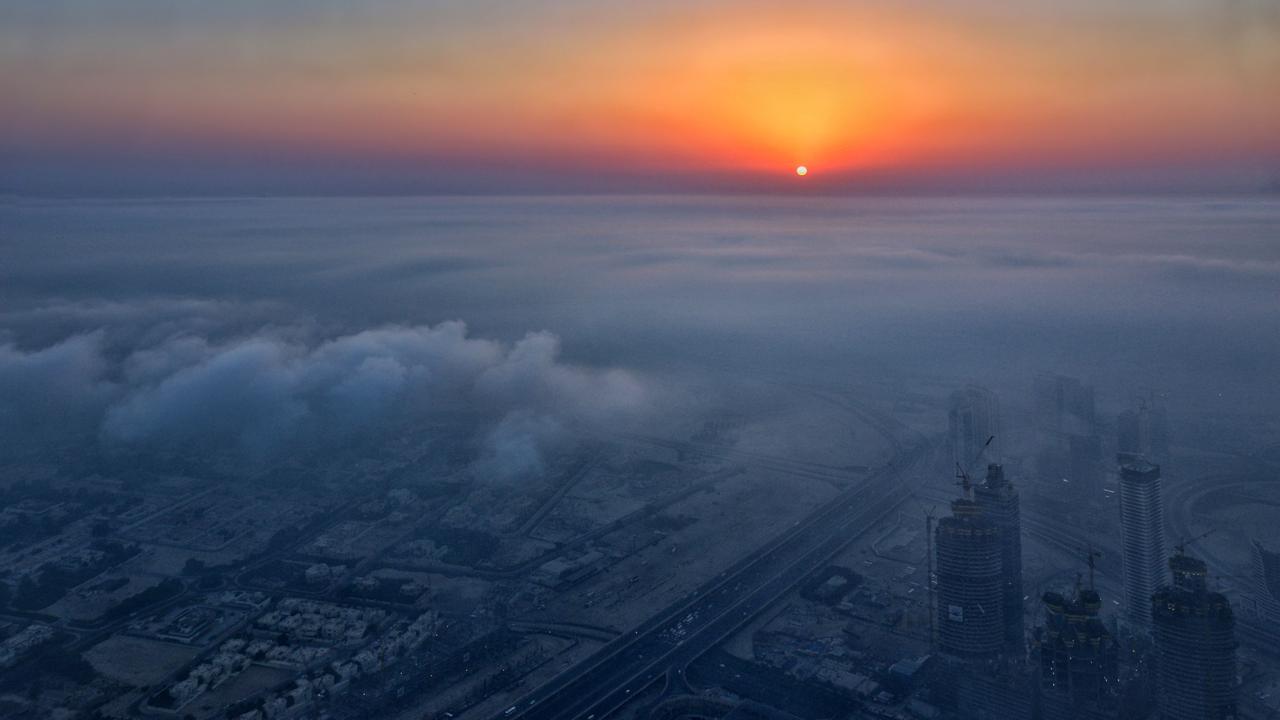A beautiful but complicated phenomenon in Dubai

A few times per year – if you are in the right place at just the right time and luck is on your side – you might get to see Dubai turn into a futuristic city in the clouds.
An unseen side of DubaiIn a relatively short time, Dubai’s skyscrapers have become icons – distinct markers of a futuristic air-conditioned metropolis in the middle of an otherwise arid desert.
And while the city continues to change drastically from month to month, with new skyscrapers seeming to grow from the ground overnight, the weather is actually quite homogeneous, with long days alternating between being either hot or exceptionally hot and skies varying between shades of blue or bluer.
But a few times per year – if you are in the right place at the right time and luck is on your side – you might get to see this futuristic metropolis become a city in the clouds, as a seasonal, thick fog rolls in and envelopes Dubai.
A beautiful but complicated phenomenonSeeing and capturing this fog is tricky. Accounts vary, but between two to six times per year, sometime between September and November, the lights of the city disappear in a mist so thick you can't see the ground in front of you.
The fog appears during the shift from scorching summer to moderately cooler winter. As the cool air of the nights meets the hot humid days, fog forms in the early hours, blanketing the city in a thick haze.
Seasonality aside, you have to be up early to see the fog in action. It tends to burn off by 9 am and generally becomes too harsh to photograph by 7 am – which means the earlier you’re up, the better.
Early to riseIf I had known about this natural phenomenon when my alarm went off at 3:30 am to shoot the sunrise, I would have been much more motivated. As it happened, I had arranged to take early morning shots from the Burj Khalifa – the tallest building in the world – fog or not, so getting to see and photograph the occurrence was an unexpected highlight.
You have to be strategic to see Dubai from above the fog. The city has no shortage of skyscrapers, but only 15 to 20 of them go high enough to peek through the clouds. Go to any floor below the 70th, and you'll likely just see white.
Most of these 15 to 20 buildings are private apartments or hotels, so it can be tricky to talk your way to the top, especially if you’re carrying professional camera equipment. The Princess Tower, Burj Khalifa, Index Tower, Rose Rayhaan (known as the Rose Tower) and Cayan Tower all reach higher than 70 floors.
It was still dark by the time my friends and I walked into the Burj Khalifa’s labyrinthine entrance. For part of the year, generally from November to March, and during special occasions, the Burj opens its viewing platforms to the public starting at 5:30 am. Sunrise visits start on the 124th floor and take place Thursdays, Fridays and Saturdays.
The inside of the Burj is so complex, it sometimes felt like I would never find my way up. I was thankful for the city’s strong spiced gahwa (Arabic coffee), which woke me up on the way.
By the time we stepped out on the 125th floor – 456m above the earth – the sky was just beginning to brighten and the city’s lights were still ablaze. Everyone ran to the window to look down.

Photo by Jarrad Seng
Later in our trip, we woke up early again to go hot air ballooning over the desert – but the fog had other plans. We couldn’t fly until the weather was clear.
Kicking off our shoes, we sank our toes into the cold red desert, breaking a clean footprint into the damp sands and wandering deep into the mists. It was an ethereal contrast to the bright clouds we’d seen above urban Dubai.
Seeing the sun rise through dense fog is not something I've seen often – and definitely not in the deserts of the Middle East. It seemed to inject a magic in the air, with everyone in our group running around, throwing sand in the air and dancing in the fog.
Before long, the bubble burst. "Yalla yalla yalla!" our drivers called, pulling us back to the vans to go ballooning. We slid our shoes and turned our back on the sandy horizon. The moment was over.
Dubai is one of the most strongly air conditioned places I've ever been, which means that anything glass, like your camera lenses, fog the moment you walk outside. To prevent this, try leaving your camera equipment outside on your balcony or turning the air off before heading out. In addition, bring as many glass wipes as you can and don't change your lenses outside (otherwise, your sensor will fog too, and you won't get any usable photos). For early morning shots, a tripod is recommended for navigating low light conditions.
While most of the fog happens in the autumn and can be incredibly unpredictable, it's worth keeping an eye on the humidity index and temperature to see if weather reports are predicting fog during other times of the year.
Политика конфиденциальности | Правила пользования сайтом












